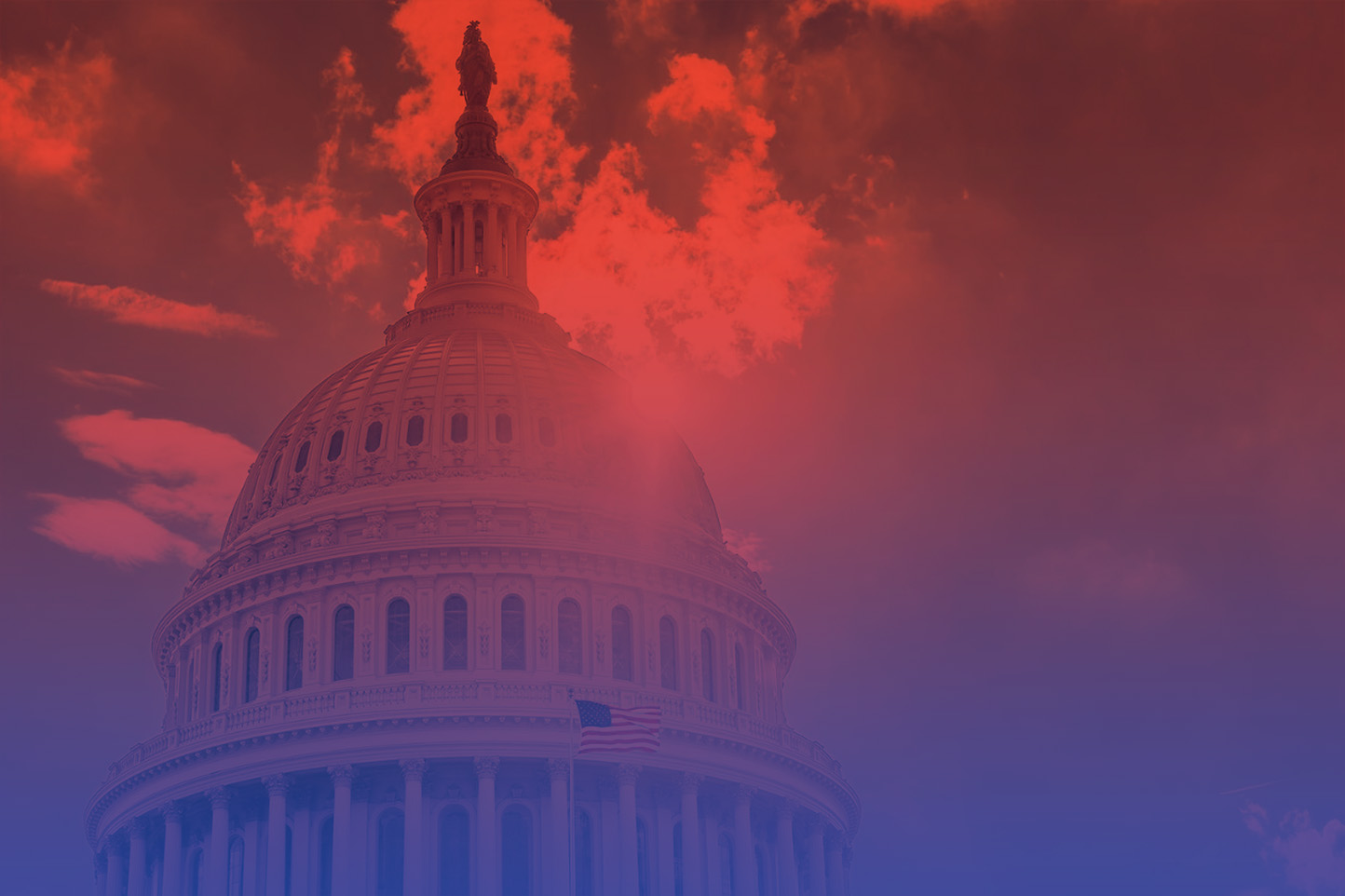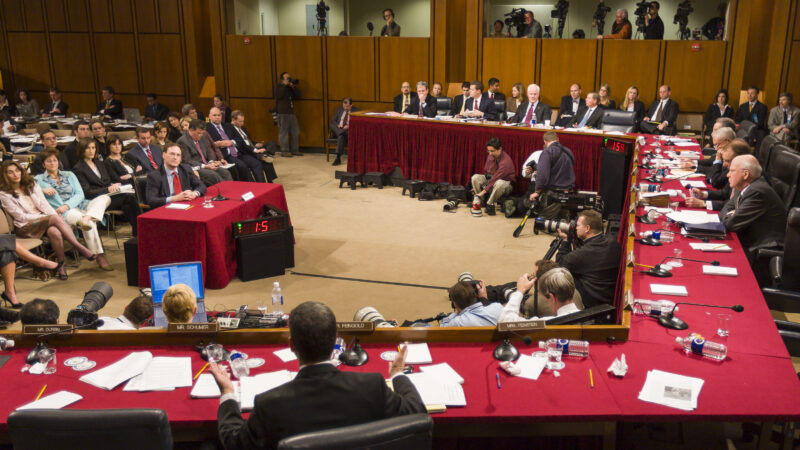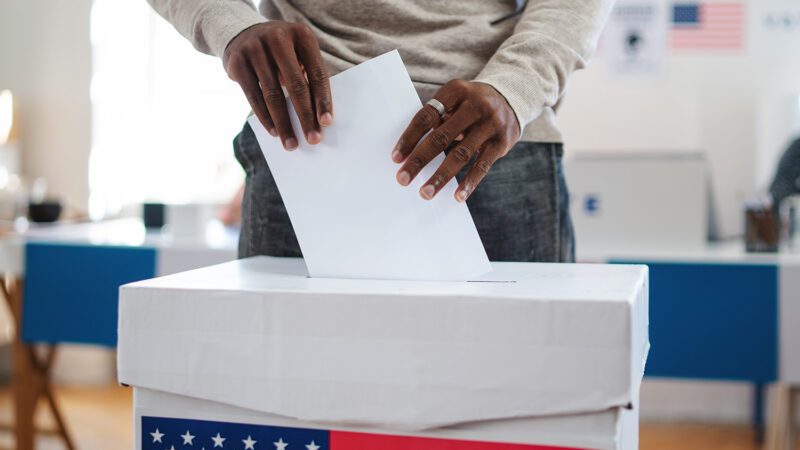Genevieve leads a team focused on defending civil society against a range of threats, protecting civic space and other democratic guardrails, and securing accountability for abuses of power through a combination of strategic litigation, policy advocacy, and communications.
Here’s what Electoral Count Act reform should look like
- October 27, 2022

This was originally published in 2022 during efforts to reform the Electoral Count Act of 1887. In December of 2022, Congress passed The Electoral Count Reform Act to enact crucial updates to the outdated 1887 law, including some of the recommendations listed below. You can read more about the Electoral Count Reform Act here.
BACKGROUND
Presidential elections in the United States are unlike other elections. The president and vice president are chosen not by the voters directly, but by the Electoral College, which is composed of electors from each state. Article II of the Constitution provides that each state “shall appoint” its presidential electors “in such Manner as the Legislature thereof may direct.” All states have chosen to conduct elections, and most appoint all electors to the winner of the statewide popular vote.
Therefore, when voters go to the polls in November during presidential elections, they actually vote for electors who are pledged to a specific political party’s candidates — the voters do not vote directly for the candidates themselves. The appointed electors (i.e., those who won the election) then gather in December in their respective states to vote for president and vice president, and send certificates of their votes to Congress to be counted in January.
The Constitution says relatively little about this process. Article II gives Congress the power to “determine the Time of chusing the Electors” — effectively, the power to set Election Day. It also requires that all electors vote on the same day chosen by Congress. The Twelfth Amendment requires that the presidential electors meet and vote on the day chosen by Congress and then transmit lists of their votes to the President of the Senate (a position typically filled by the vice president) to be opened “in the presence of the Senate and House of Representatives.” The Twelfth Amendment then says “the votes shall then be counted.” The candidate having the greatest number of electoral votes for president then becomes president, “if such number be a majority of the whole number of Electors appointed.” (The same process applies to the election of the vice president.)
The Constitution provides little more detail on the process. That’s where the Electoral Count Act (ECA) comes into play. Congress enacted the ECA in 1887 following the fiercely contested presidential election of 1876, during which the lack of process and rules governing Congress’ counting of electoral votes threatened an existential political and Constitutional crisis.
Since 1887, the ECA has provided the primary legal framework for casting and counting electoral votes for president and vice president in accordance with the requirements of the Constitution. In addition to setting a timeline for states to appoint electors in November and transmit their votes to Congress in December, the ECA governs the process by which Congress counts electoral votes in January.
(For more detail on the ECA and how it governs presidential elections, see The Electoral Count Act & The Process of Electing a President by the National Task Force on Election Crises.)
Flaws in the Statue and Proposed UpdatesFLAWS IN THE STATUTE & PROPOSED UPDATES**
The Electoral Count Act suffers from a number of flaws, stemming largely from vague and antiquated language. Congress can remain faithful to the original purpose of the statute and, importantly, the Constitution, while also remedying dangerous weaknesses in the ECA. It can and should do so by addressing five key aspects of the law.
Clarify when states may appoint electors(1) Clarify that states may only appoint electors after Election Day in a narrow set of extraordinary circumstances. The ECA provides that if a state has held an election but somehow “failed to make a choice” on Election Day, then the state legislature may choose the manner of appointing electors on a subsequent day (Note: A version of this provision actually dates back to the Presidential Election Day Act of 1845, and thus preceded the ECA. But it is now included in Title 3 of the U.S. Code alongside the ECA and, given the linkages between the statutes, should be updated along with the ECA). See 3 U.S.C. § 2. This provision was meant to accommodate run-off elections and extreme weather conditions that sometimes prevented the completion of elections on a single day. It was not meant to provide an opening for politicians to reject election results or override the will of the voters. But the language is vague and, importantly, the statute does not define what it means for an election to “fail.” Accordingly, some members of Congress and others have tried to argue that delays in counting votes or disputes about how an election was conducted can form the basis of a “failure” that would justify state legislatures appointing electors themselves after Election Day. That argument is inconsistent with the history and intent behind the ECA, as well as its other provisions.
Nevertheless, a revised ECA should define or replace the concept of “failure” and make clear that only under a narrow set of extreme circumstances, such as a major natural disaster or terrorist attack, may electors be appointed after Election Day. And if this provision is triggered, at a minimum, states should be required to stick with their previous choices as to the manner of appointing electors.
Ensure state-level determinations are respected by Congress(2) Better ensure that state-level determinations of election results made in accordance with state law are respected by Congress.
Presidential elections are governed by a combination of the Constitution, federal statutes, and state and local law. Congress determines the timing of the election, including the day on which electors are appointed, and then later counts electoral votes. States determine the manner of appointing electors (e.g., whether by popular election or some other method). And the mechanics of conducting the election are governed primarily by state and local law subject to any constraints or obligations imposed by federal law or the Constitution.
The ECA was crafted with the intent of ensuring that states make timely, final determinations as to the outcome of their presidential elections, including resolving disputes through judicial or other means, so that Congress is positioned to simply count each state’s electoral votes. The ECA’s “safe harbor” provision was intended to accomplish this by providing that when a state finally resolves disputes pursuant to existing law by a certain date, the state’s final determination must be treated as “conclusive” by Congress — meaning Congress cannot second-guess the state’s election results. But the statute does not include any enforcement mechanism and its vague terms allowing Congress to consider whether electoral appointments are “lawfully certified,” and whether electoral votes are “regularly given,” have been misunderstood (at best) by some members of Congress in the past to justify objecting to valid state results.
The ECA therefore can do more to ensure that timely state determinations of election results are respected by Congress. Indeed, Congress’ limited role when it convenes in January is to ensure that the submissions it receives from the states are authentic, in that they reflect the actual outcome of those elections consistent with state and federal law. To that end, Congress should ensure that courts can intervene if, for example, state actors go “rogue” and purport to certify results that do not reflect the outcome of the election. But it is not for Congress to second-guess how the states conducted their elections once they have received valid state submissions.
A revised ECA should clarify these respective roles of the states, Congress, and the courts. The law should create stronger incentives for states to submit timely, lawful certifications of their election results, and it should constrain attempts by Congress to overturn any state’s validly certified election results.
Clarify that the vice president plays a ceremonial role(3) Clarify that the vice president (as President of the Senate) plays a limited and largely ceremonial role in the process of counting electoral votes.
The Twelfth Amendment provides that appointed electors must send certificates of their votes for president and vice president to the President of the Senate, and then with respect to his or her role says only that, “[t]he President of the Senate shall, in the presence of Senate and House of Representatives, open all the certificates and the votes shall then be counted.”
The ECA goes further in that it designates the President of the Senate as the presiding officer when Congress meets to count electoral votes on January 6th, and it assigns specific duties: preserving order and decorum; opening and handing electoral vote certificates to the tellers; calling for objections; and announcing the results of votes on objections. The ECA also requires that the President of the Senate announce the result of the overall electoral vote count at the end of the vote-counting process — meaning he or she announces the winning candidates for president and vice president. See 3 U.S.C. §§ 15, 18.
Contrary to what some tried to argue following the 2020 election, neither the Twelfth Amendment nor the ECA contemplate a role for the vice president (as President of the Senate) — or any other presiding officer — that involves resolving disputes or otherwise making substantive decisions about which electoral votes to count. The ECA should be updated to make unmistakably clear that the President of the Senate has a limited, largely ceremonial role in the process of counting electoral votes.
Raise the threshold for Members of Congress to object(4) Raise the threshold for Members of Congress to object to a state’s certified election results, and clarify the narrow grounds upon which such objections may be raised or sustained.
The ECA allows for objections to the counting of electoral votes so long as those objections are made in writing and signed by one senator and one representative. It should not be so easy for members of Congress to disrupt or undermine the counting process by objecting either to a state’s appointment of electors (i.e., its certified election results) or to individual electoral votes. The number of members required to lodge a cognizable objection should be substantially higher than the current threshold.
In addition, the grounds upon which members of Congress may make or sustain objections to an elector’s appointment or vote should be narrow and clear, consistent with Congress’ role in counting, but not second-guessing, states’ electoral votes. The ECA currently allows for objections that an appointment of electors is not “lawfully certified” or that an electoral vote is not “regularly given.” (Note an important difference between the two categories of objections — the term “regularly given” applies to the conduct of electors after they are appointed and not, as members of both parties have suggested, to pre-appointment controversies over the conduct of elections.) But those terms are undefined and the language of the statute is muddled. Instead, an updated ECA should clearly enumerate an exhaustive list of appropriate grounds for objections — separating out objections to appointments of electors and objections to electoral votes.
With respect to the appointment of electors, the grounds for objection should be limited to the authenticity of a state’s submission — whether it reflects the actual outcome of a state’s election consistent with state and federal law (e.g., members of Congress should be able to object if electors are appointed in defiance of a court order) — and the constitutional eligibility of individual appointed electors. With respect to electoral votes, the grounds for objection should be limited to the validity of a vote under applicable law and constitutional rules, and narrow circumstances in which votes are the result of bribery or other improper influence.
Establish clear rules and processes for resolving disputes in Congress(5) Establish clear rules and processes for resolving disputes in Congress as to counting electoral votes.
Updating the ECA as described above should make it unlikely that there will be a genuine dispute in Congress as to the counting of electoral votes. But such disputes are not impossible, and there is reason to be concerned, after the 2020 election laid bare the statute’s many weaknesses, that partisan actors will again attempt to exploit those weaknesses — including by somehow submitting competing or “alternate” slates of electors to Congress.
Thus, if all else fails, it should be absolutely clear what happens if there is a dispute within Congress as to the counting of electoral votes. If the Senate and the House of Representatives disagree on whether to count one or more electoral votes, there should be no doubt as to which votes are ultimately counted — and therefore, in the most extreme scenario, which candidate has been elected president. One way to add this certainty is to clarify the language of the statute and rely on members of Congress and others to respect the rules. Another is to assign a tie-breaking role to the courts. Whatever mechanism Congress chooses to resolve disputes, the process (and thus the final resolution) must not be obscured as it is now by convoluted statutory language.
ConclusionCONCLUSION
The Electoral Count Act governs one of the most important exercises in American democracy — the election of the president and vice president every four years, and the transition period from one presidential administration to the next. The nation has been lucky that the law has served us relatively well (even if not perfectly) since 1887. But the 2020 election and the events of January 6, 2021 laid bare the weakness in the statute, and the nation should be prepared for partisan actors to attempt to exploit those weaknesses in future elections. To guard against a future crisis that might risk a peaceful transition of power, Congress should update and clarify the law. And it should do so in a comprehensive manner that addresses each of the issues described above.
**A version of this overview was published in Lawfare: Thomas Berry & Genevieve Nadeau Here’s What Electoral Count Act Reform Should Look Like (April 4, 2022).
Related Content
Join Us.
Building a stronger, more resilient democracy is possible, but we can’t do it alone. Become part of the fight today.
Donate
Sign Up for Updates Sign Up for Updates
Explore Careers Explore Careers
How to Protect Democracy How to Protect Democracy




